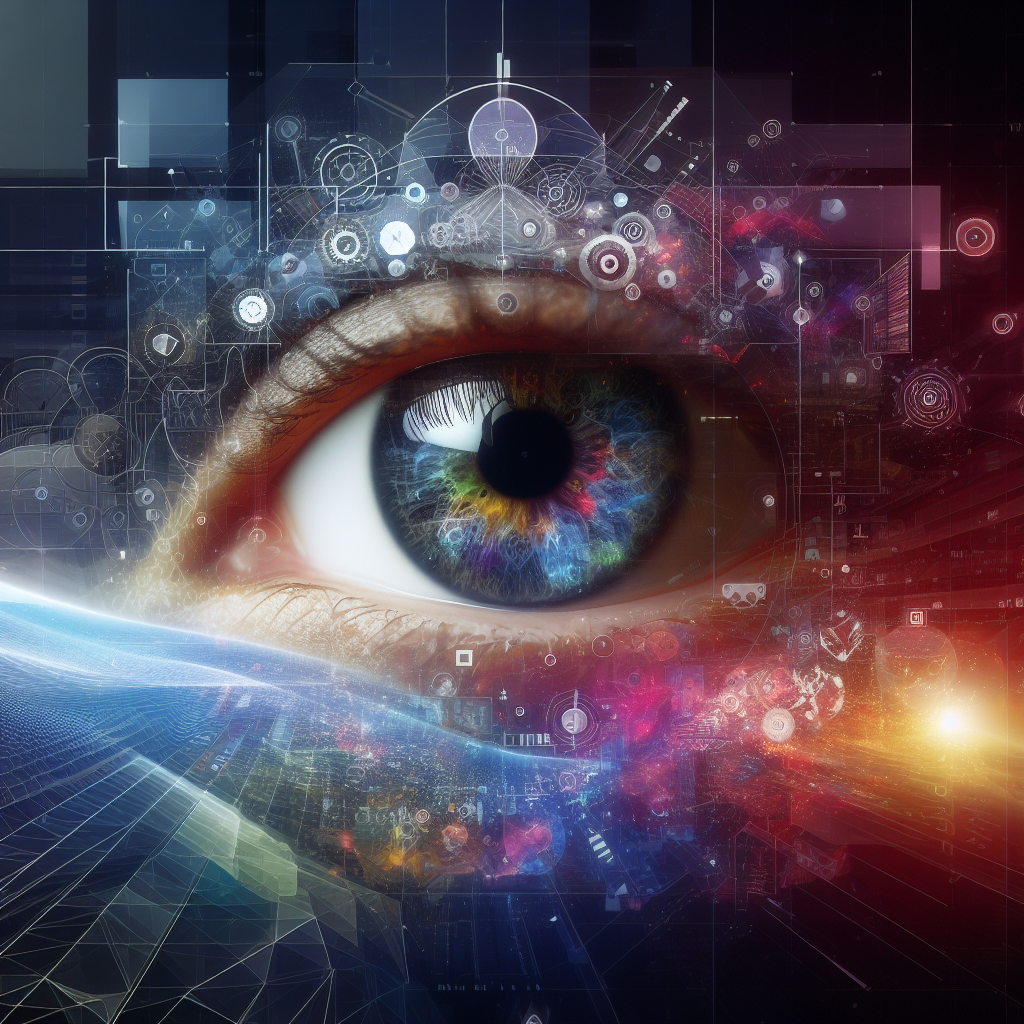Untangling the Web: What is Graphic Design?
Imagine a world without visual cues. No vibrant packaging enticing you at the grocery store. No sleek websites guiding your online journey. No captivating posters telling stories on city walls. This, in essence, is a world without graphic design.

Graphic design is the art of visual communication, the magician behind the curtain weaving stories and experiences through images, typography, and layout. It’s the bridge between ideas and reality, transforming complex concepts into easily digestible visuals that inform, persuade, and delight.
Think of it like a chef crafting a dish. Just as a chef carefully selects ingredients and arranges them to create a masterpiece of taste and aroma, a graphic designer meticulously chooses visual elements and orchestrates them to evoke emotions, convey messages, and leave a lasting impression.
But unlike a fleeting culinary experience, graphic design often leaves a tangible impact. It shapes the way we perceive brands, navigate the digital world, and even understand complex information. From the logos we recognize instantly to the infographics that simplify data, graphic design is an invisible thread woven into the fabric of our daily lives.
So, what sets graphic design apart from other visual arts like painting or photography?
- Purposeful Communication: Unlike art for art’s sake, graphic design has a clear goal – to communicate a message, evoke an emotion, or guide an action. It’s not just about aesthetics, but about using visuals strategically to achieve a specific outcome.
- Collaboration and Problem-Solving: Graphic design rarely exists in a vacuum. It often involves collaboration with clients, writers, and other creative professionals to solve communication challenges and achieve shared objectives.
- Adaptability and Versatility: Graphic design thrives on its ability to adapt to different mediums and contexts. From websites and apps to packaging and billboards, a graphic designer’s toolkit is as diverse as the challenges they face.
In the following sections, we’ll delve deeper into the core principles that guide this visual alchemy, equipping you with the basic vocabulary to decipher the world of graphic design and appreciate its transformative power. So, buckle up, and prepare to have your eyes opened to the magic of visual communication!
Building Blocks: The 5 Essential Principles of Design – Your Visual Compass
Imagine stepping into a maze without a map. Confusion reigns, paths twist and turn, and the exit seems perpetually out of reach. Now, picture that same maze adorned with clear signs, color-coded pathways, and strategic landmarks. Suddenly, navigation becomes intuitive, and the exit becomes a beacon guiding your every step.

Graphic design employs similar principles to guide the viewer’s eye and enhance comprehension. These principles are the invisible maps that structure visual information, transforming chaos into clarity and confusion into connection. Let’s explore the five essential principles that act as your visual compass in the world of design:
1. Contrast: The Spotlight of Attention
Think of a stage with a single spotlight illuminating the star performer. Contrast works in a similar way, highlighting key elements and drawing your attention to what matters most. Imagine contrasting colors, bold fonts against subtle text, or a white logo popping against a dark background. These contrasts create visual hierarchy, ensuring you see the most important information first.
2. Balance: The Art of Visual Harmony
Imagine a seesaw teetering precariously, one side heavy while the other remains empty. Visual imbalance can feel just as unsettling. Balance in design seeks to distribute elements in a way that feels stable and pleasing to the eye. This can be achieved through symmetrical arrangements, asymmetrical counterbalancing, or using visual weight to create a sense of equilibrium.
3. Emphasis: The Unforgettable Star
Picture a concert where every instrument blasts at full volume. While powerful, it’s hard to distinguish the melody. Emphasis, in design, works like a conductor, singling out specific elements to make them stand out. This can be achieved through size, color, contrast, or placement, ensuring the message you want to convey receives the necessary attention.
4. Proportion: The Dance of Relationships
Imagine a dancer whose limbs are out of proportion, their movements awkward and jarring. Proportion, in design, ensures elements relate to each other in a harmonious way. This can involve maintaining consistent font sizes, spacing elements evenly, or respecting the natural proportions of images and objects.
5. Hierarchy: The Visual Flow of Information
Think of a road map with clear directions, guiding you from point A to B. Hierarchy in design establishes a visual order, directing the viewer’s eye through the information you want them to see. This can be achieved through size, color, placement, or visual cues that guide the reading flow, ensuring the most important information is encountered first.
Mastering these principles is like learning a secret language of visual communication. By understanding how they work together, you can decode the messages hidden within design, appreciate its artistry, and even begin to craft your own visual stories that resonate and inspire.
Remember, these principles are not rigid rules but rather tools to be explored, experimented with, and ultimately used to create visually impactful and meaningful design. So, get ready to unleash your inner designer and start building your own visual masterpieces!
The Design Toolbox: Essential Elements & Techniques – Your Visual Palette
Imagine a chef without spices, a musician without instruments, or a writer without words. Just as these creative disciplines rely on specific tools to bring their ideas to life, graphic design thrives on a unique palette of elements and techniques.

These are the building blocks, the brushstrokes, the musical notes that allow designers to translate concepts into visually arresting experiences. So, let’s dive into your design toolbox and explore the essential elements that will empower you to craft your own visual stories:
1. Typography: The Dance of Letters
Words, in the hands of a skilled designer, become more than just carriers of meaning. They dance and pirouette across the canvas, their size, weight, and style shaping the tone and mood of your message. Imagine a bold, sans-serif font commanding attention, a playful script font exuding whimsy, or a classic serif font conveying timeless elegance. Typography is the art of choosing the right typeface, setting the perfect size, and arranging letters in a way that resonates with your audience and amplifies your message.
2. Color Theory: The Language of Emotions
Color is more than just a visual property; it’s a powerful language that speaks directly to our emotions and perceptions. A vibrant red can evoke excitement and passion, a calming blue can promote tranquility and trust, while a sophisticated black can exude luxury and power. Understanding color theory, the harmonious blending and contrasting of colors, allows you to create palettes that not only delight the eye but also subconsciously influence your audience’s feelings and interpretations.
3. Layout & Composition: The Art of Arrangement
Imagine a jumble of ingredients thrown haphazardly onto a plate. While technically edible, it lacks appeal and direction. Layout and composition, in design, are the chefs who orchestrate visual elements, arranging them in a way that is both pleasing to the eye and functionally effective. This involves using grids for structure, white space for breathing room, and alignment to create visual harmony. By mastering these techniques, you can guide your audience’s eye through your design, ensuring they see the most important elements first and experience your message in a cohesive and impactful way.
4. Imagery: The Power of a Thousand Words
A single image can speak volumes, evoking emotions, sparking memories, and conveying complex ideas in an instant. Photographs, illustrations, and icons become powerful tools in the designer’s arsenal, adding depth, personality, and emotional resonance to their creations. Choosing the right image, considering its style, composition, and emotional tone, can elevate your design from informative to truly captivating.
5. Design Software: Your Digital Workshop
Just as a carpenter relies on a hammer and chisel, a graphic designer utilizes specialized software to bring their vision to life. Programs like Adobe Photoshop, Illustrator, and InDesign become your digital workshop, allowing you to manipulate images, create layouts, and experiment with typography and color. Mastering these tools empowers you to translate your ideas from concept to reality, transforming sketches into polished designs that impress and inspire.
Remember, your design toolbox is not a static collection of elements, but rather a dynamic playground for your creativity. Experiment with different combinations, explore new techniques, and challenge yourself to push the boundaries of what’s possible. With a playful spirit and a willingness to learn, you can unlock the full potential of these essential elements and techniques, crafting visual stories that resonate and leave a lasting impact on your audience. So, grab your metaphorical brush, open your digital workshop, and get ready to paint your own masterpiece in the language of graphic design!
Beyond the Basics: Putting it all Together – From Apprentice to Visual Alchemist
Imagine a young apprentice, eager to learn the art of alchemy. They master the fundamentals – identifying ingredients, manipulating fire, understanding the delicate balance of elements. But true mastery lies not just in technical prowess, but in the ability to transcend formulas and ignite the spark of creation. This final step in our design journey mirrors the alchemist’s quest, where the learned principles become the tools to transform ordinary elements into visual gold.

So, let’s step beyond the individual building blocks and explore how they synergize in real-world design alchemy:
- Deconstructing Design Magic: Analyze successful graphic design pieces, dissecting their use of contrast, hierarchy, and color theory. Identify how these principles work together to create a cohesive and impactful experience.
- From Sketch to Screen: Witness the transformation of a rough sketch into a polished final design. See how designers leverage software tools to refine ideas, experiment with layouts, and bring their vision to life.
- The Power of Storytelling: Learn how graphic design can be used to weave narratives, evoke emotions, and connect with audiences on a deeper level. Explore examples where design transcends mere information delivery and becomes a powerful storytelling tool.
- Building a Design Vocabulary: Expand your knowledge of design terminology and trends. Understand terms like «negative space,» «kerning,» and «flat design» to engage in deeper conversations about visual communication.
- From Consumer to Creator: Don’t just admire design, participate in it! Experiment with online tools, explore design challenges, and create your own visual pieces. The more you practice, the more comfortable you’ll become wielding the tools of this powerful language.
Remember, mastering the art of design is not a linear journey but an ongoing exploration. Embrace curiosity, challenge yourself, and don’t be afraid to experiment. Just like the alchemist seeks to unlock the hidden potential of elements, so too can you unlock the power of visual communication to inform, inspire, and leave your own mark on the world.
So, ignite your inner designer, embrace the spirit of experimentation, and embark on your own journey of visual alchemy!
The Future is Visual: Why Graphic Design Matters – Beyond Aesthetics, Beyond the Screen
In a world saturated with information, bombarded by pixels and fleeting trends, it’s easy to dismiss graphic design as mere eye candy, a veneer of aesthetics on a digital world. But beneath the surface, a deeper truth lies hidden – graphic design is more than just a pretty face; it’s the architect of understanding, the bridge between ideas and action, and the silent shaper of our everyday realities.

Think of the ubiquitous logos that spark instant brand recognition, the intuitive interfaces that guide us through complex tasks, the compelling infographics that make complex data digestible, the captivating visuals that evoke emotions and fuel social movements. These are not mere visual bells and whistles; they are the invisible threads woven into the fabric of our daily lives, shaping our understanding, influencing our choices, and even nudging us towards a more informed and connected future.
But the impact of graphic design extends beyond the screen. It shapes the physical world around us, from the packaging that graces store shelves to the wayfinding systems that guide us through cities. It influences the products we buy, the messages we hear, and even the way we perceive our environment. In a world increasingly dominated by visual stimuli, graphic design has become the silent language we all speak and understand.
So why does graphic design matter? Here are just a few reasons:
- It empowers communication: Design bridges the gap between complex ideas and diverse audiences, making information accessible and impactful.
- It shapes perception: Design influences our understanding of the world, shaping brand identities, promoting social causes, and even influencing public opinion.
- It drives innovation: Design pushes boundaries, fuels creative thinking, and inspires new ways of approaching problems and communicating solutions.
- It fosters connection: Design creates shared experiences, builds communities, and sparks conversations that bring people together.
As technology advances and the visual landscape evolves, the role of graphic design becomes even more critical. It’s not just about staying ahead of trends; it’s about harnessing the power of visuals to create a more informed, connected, and sustainable future.
So, the next time you encounter a well-designed logo, an intuitive app interface, or a powerful infographic, remember – it’s not just aesthetics; it’s the silent language of graphic design working its magic, shaping our world, one pixel at a time.
Embrace the power of visual communication, explore the possibilities of design, and become an active participant in shaping the future, one visual story at a time.
